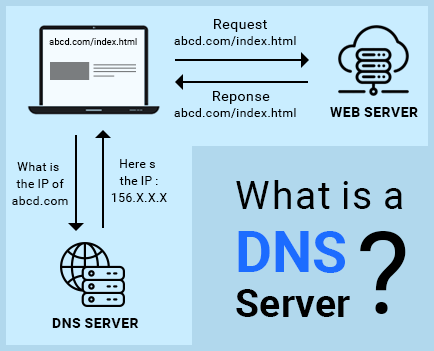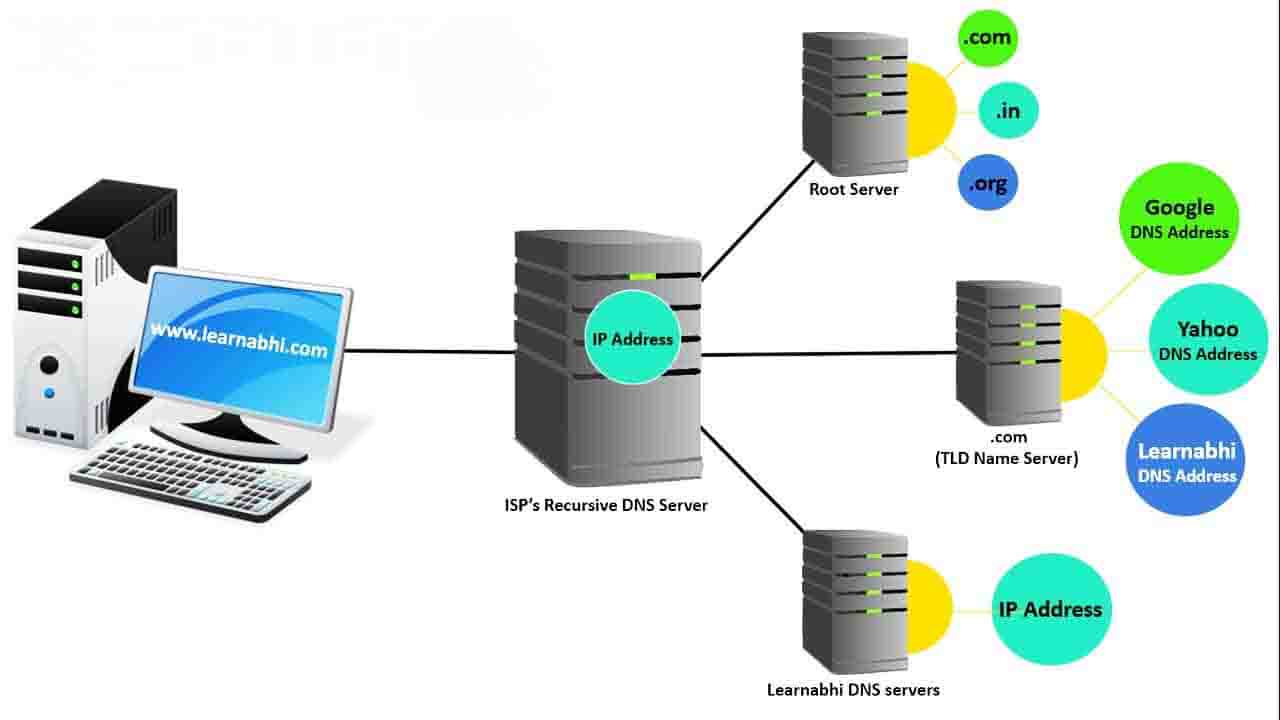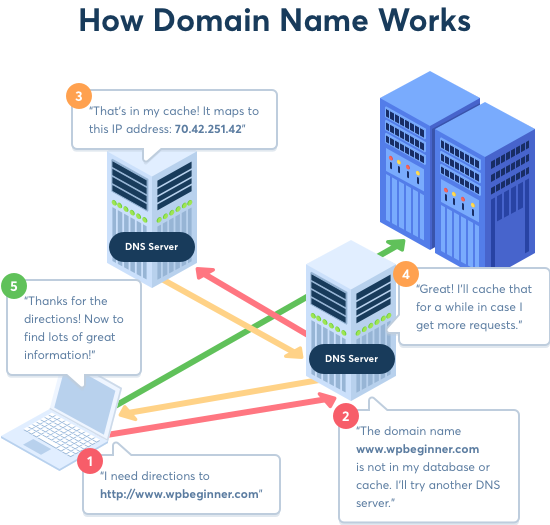What is DNS?

DNS is an abbreviation for Domain Name System, and refers to a system that manages and operates the correspondence between
domains
and IP
addresses
.
A domain is a string that is easy for humans to understand, such as “www.google.com”, assigned to an IP address, and the correspondence between this domain and an IP address is stored in DNS as information called a “record.”

For example, when a user accesses a particular domain on a browser, a query is sent to DNS to retrieve the IP address from the domain name, and DNS searches the record and returns the corresponding IP address. This process of clarifying the correspondence between domains and IP addresses is called “name resolution.” In particular, obtaining an IP address from a domain is called a “forward lookup,” and conversely, determining a domain name from an IP address is called a “reverse lookup.”

DNS is a globally distributed system that allows name resolution from any network in the world. The reason why you can access foreign domains from Japan is because DNS servers around the world work together.

How DNS works

Domains have a hierarchical structure, and DNS is also managed in a hierarchical structure starting from the root server.
Specifically, the root server manages which IP address ranges top-level domains such as “jp” and “com” are assigned to. The DNS server that manages each top-level domain also manages the correspondence table for lower-level DNS servers.

For example, when resolving the domain name “www.example.jp,” an inquiry is first made to the root server, then to the DNS server that manages jp, and finally to the DNS server that manages example.jp. By making a query, you can get the corresponding IP address from the record.
In this way, DNS has a hierarchical structure that allows repeated queries to be made, making it possible to flexibly respond to queries for all namespaces.

Reference article


